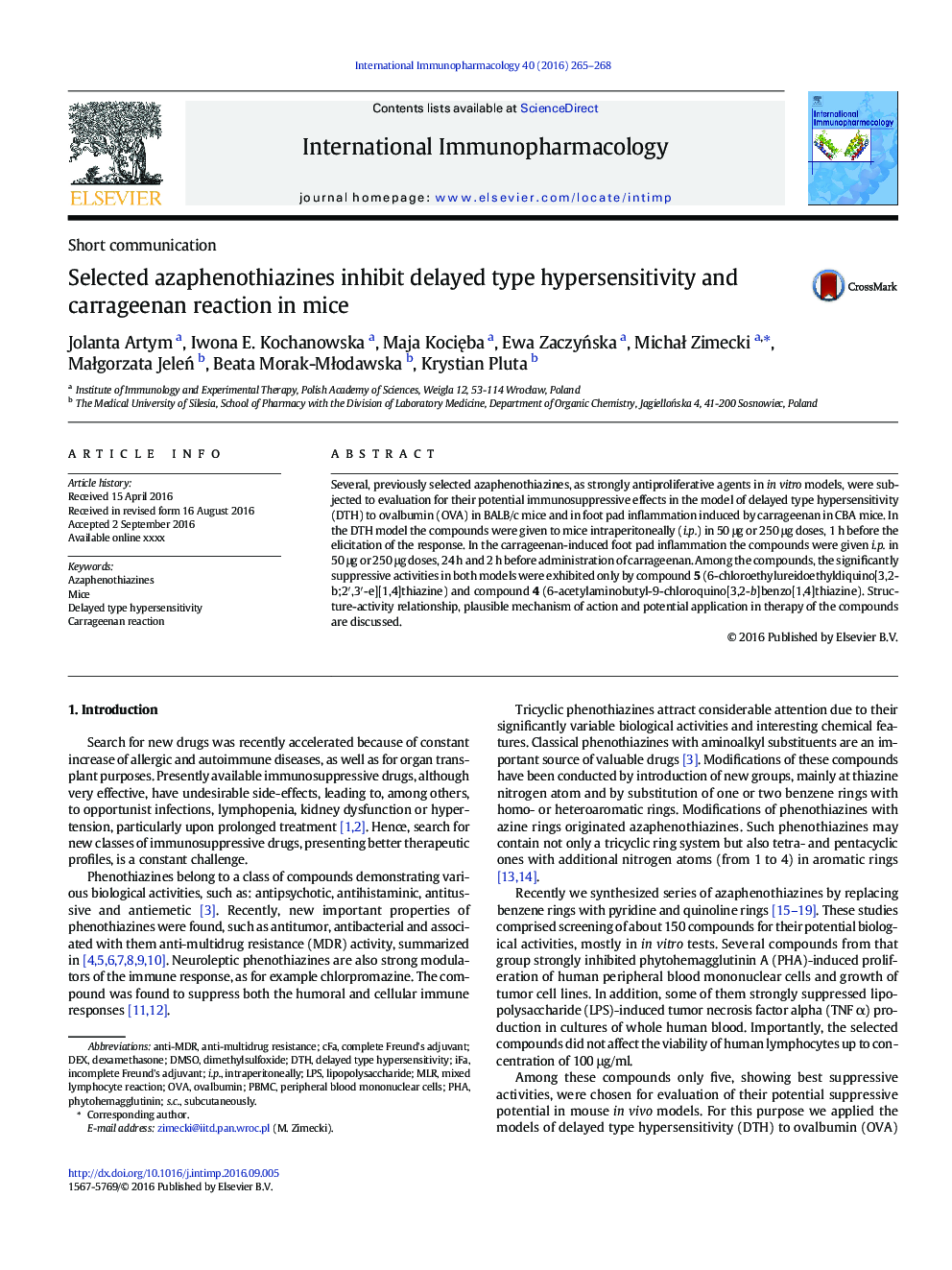| Article ID | Journal | Published Year | Pages | File Type |
|---|---|---|---|---|
| 2540181 | International Immunopharmacology | 2016 | 4 Pages |
•The phenothiazine structure modified with the pyridine and quinoline rings•Azaphenothiazines suppress elicitation of delayed type hypersensitivity.•Azaphentiothiazines inhibit carrageenan-induced foot pad inflammation.•Azaphenothiazines are potential anti-inflammatory therapeutics.•The quinoline moiety conditions a better activity than the pyridine ring.
Several, previously selected azaphenothiazines, as strongly antiproliferative agents in in vitro models, were subjected to evaluation for their potential immunosuppressive effects in the model of delayed type hypersensitivity (DTH) to ovalbumin (OVA) in BALB/c mice and in foot pad inflammation induced by carrageenan in CBA mice. In the DTH model the compounds were given to mice intraperitoneally (i.p.) in 50 μg or 250 μg doses, 1 h before the elicitation of the response. In the carrageenan-induced foot pad inflammation the compounds were given i.p. in 50 μg or 250 μg doses, 24 h and 2 h before administration of carrageenan. Among the compounds, the significantly suppressive activities in both models were exhibited only by compound 5 (6-chloroethylureidoethyldiquino[3,2-b;2′,3′-e][1,4]thiazine) and compound 4 (6-acetylaminobutyl-9-chloroquino[3,2-b]benzo[1,4]thiazine). Structure-activity relationship, plausible mechanism of action and potential application in therapy of the compounds are discussed.
